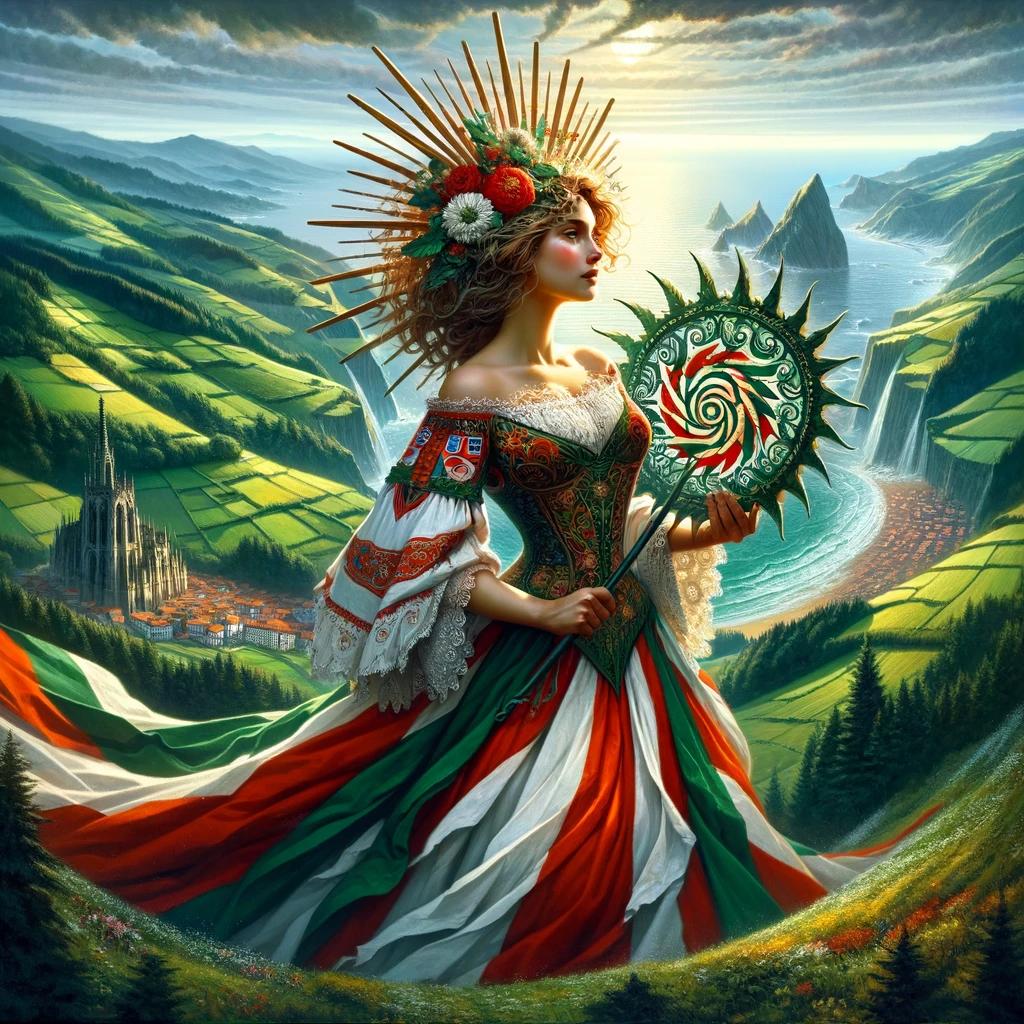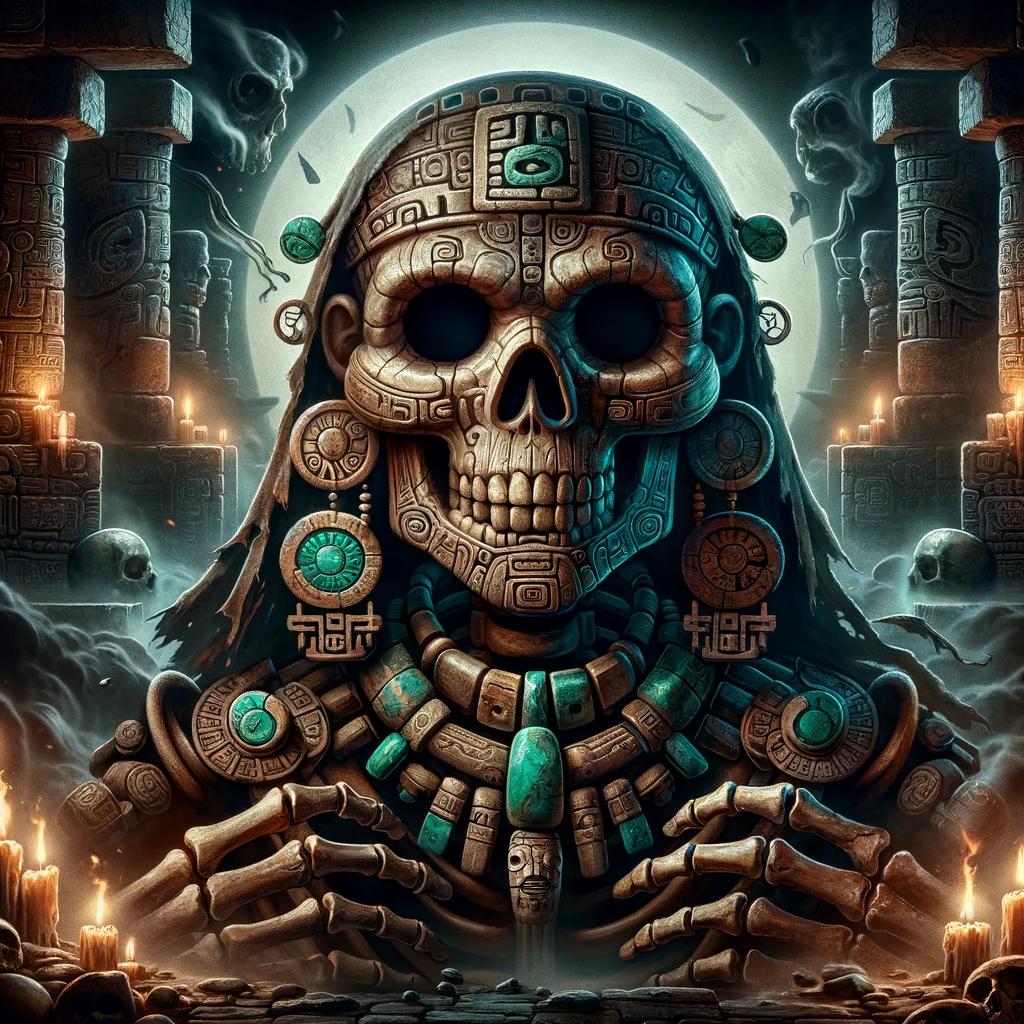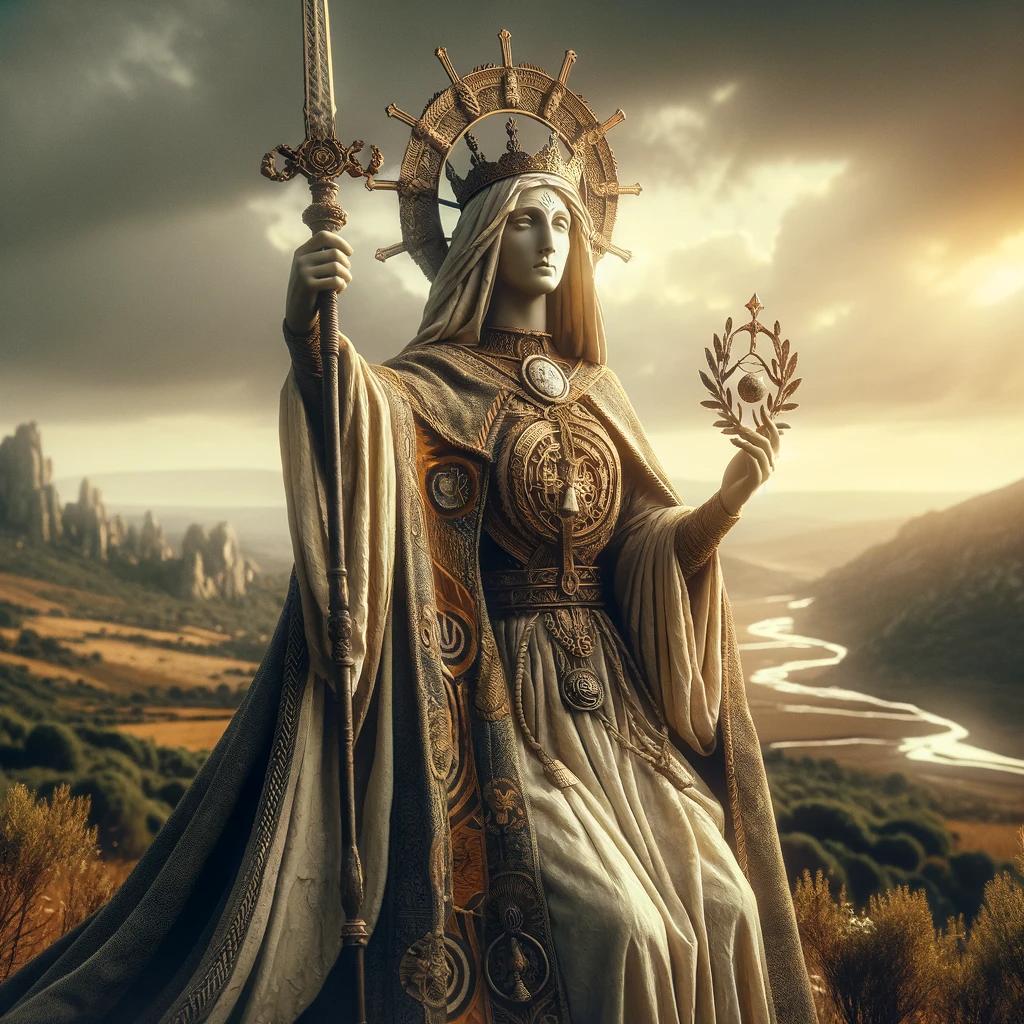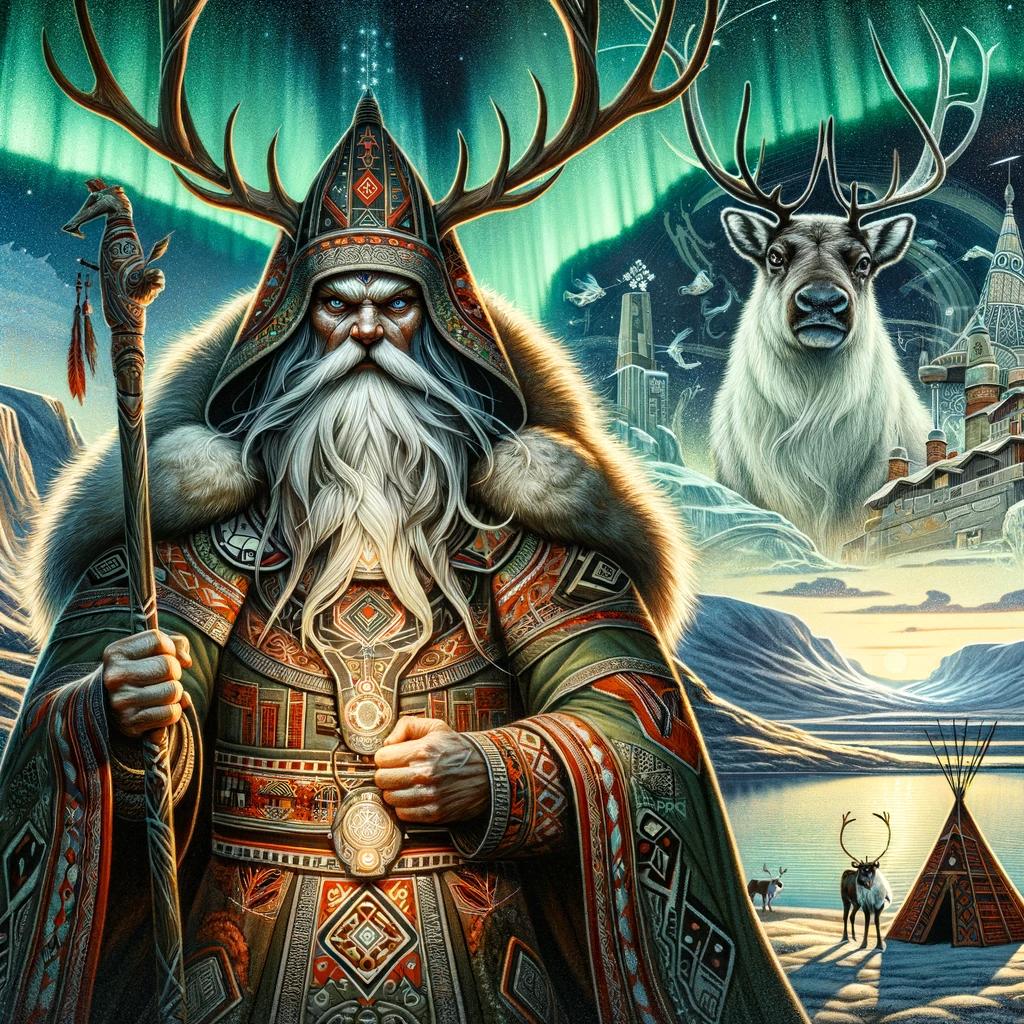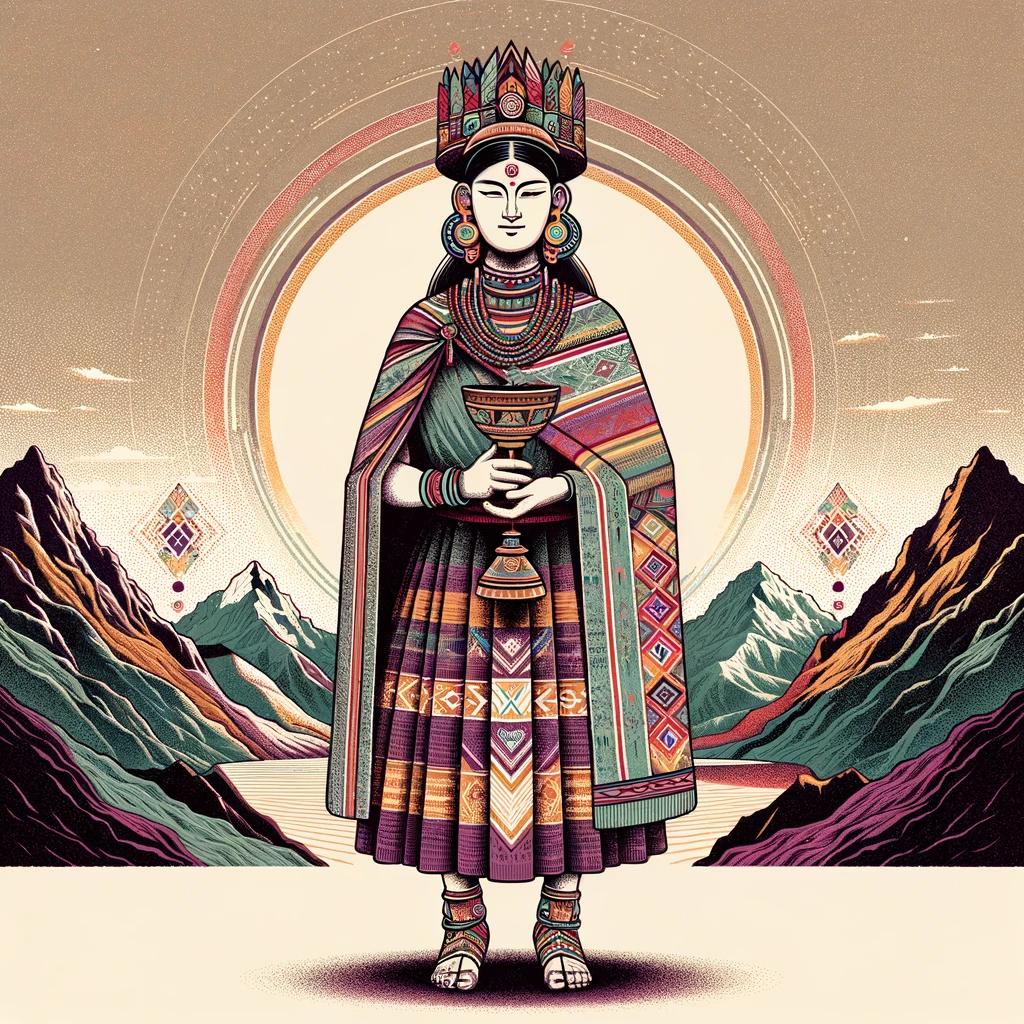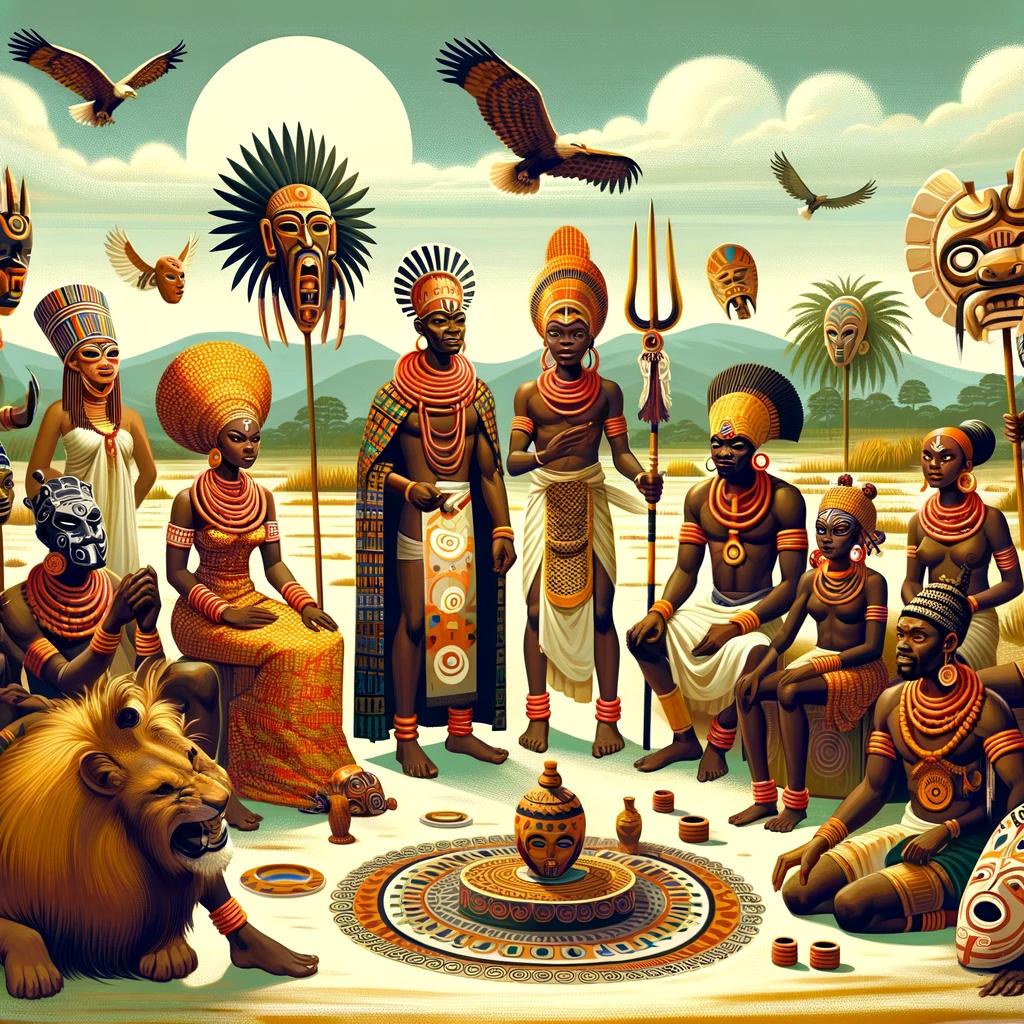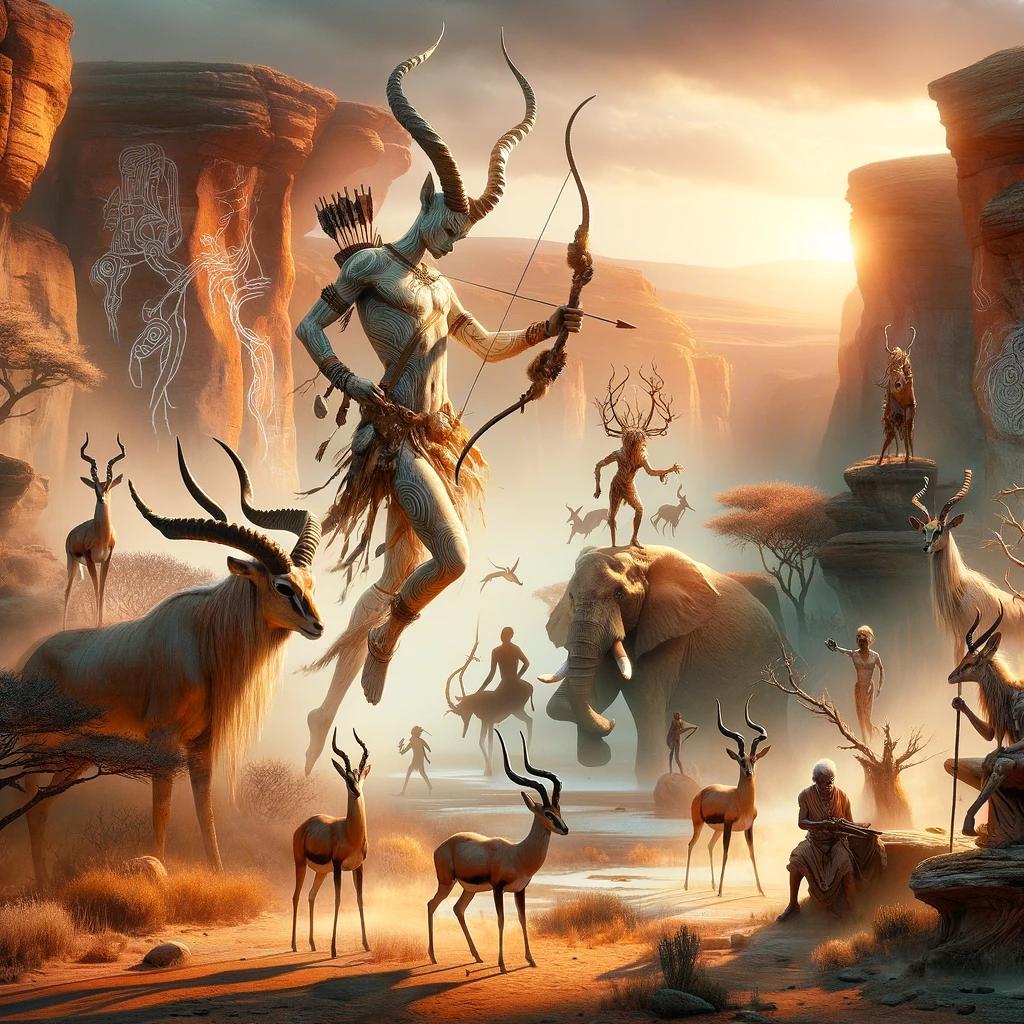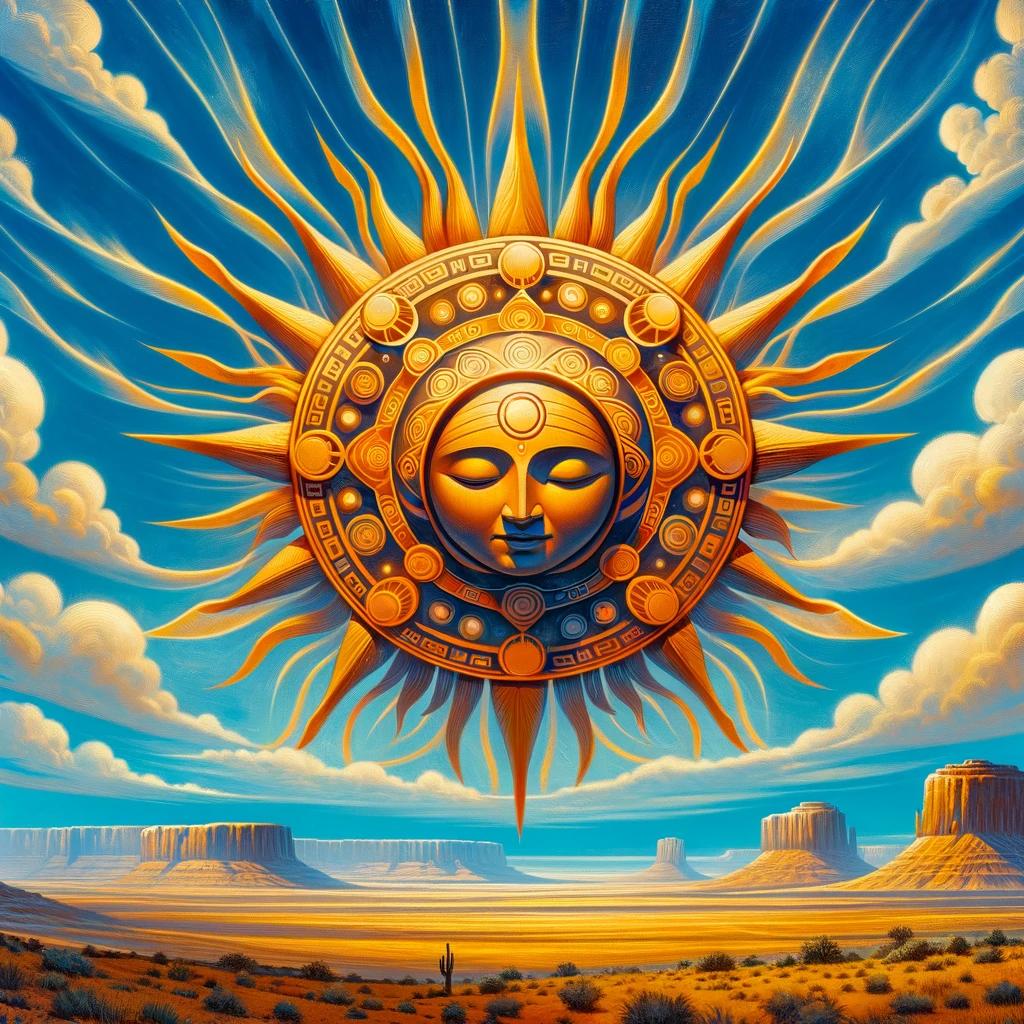Basque Mythology Gods and Goddesses: Exploring the Rich Legends of the Basque Region

Basque mythology gods and goddesses hold a significant place in the cultural traditions of the Basque region. Rooted in the four natural elements of fire, earth, air, and water, with earth symbolizing fertility and connection to nature, this mythology encompasses a diverse range of legends and myths.
The goddess Mari, known for her shape-shifting abilities, takes center stage in Basque mythology. Other notable figures include the solar deity Eguzki Amandrea, the lunar goddess Ilargi Amandrea, and mythical creatures like Basajaun, Lamia, and Galtzagorriak.
Uncover the rich world of Basque mythology and its enduring influence on the region’s culture and identity.
Overview of Basque Mythology
Basque mythology is a fascinating and diverse collection of legends and myths that have shaped the cultural traditions of the Basque region. This overview provides a glimpse into the rich tapestry of Basque folklore, exploring its key elements and themes.
Introduction to Basque Mythology
Basque mythology encompasses a vast array of gods, goddesses, mythical creatures, and legendary figures. These captivating tales have been passed down through generations, reflecting the beliefs, values, and connection to nature of the Basque people.
Key Elements in Basque Mythology
- The Four Natural Elements: Basque mythology is deeply rooted in the four elements of fire, earth, air, and water. The earth holds a central place, symbolizing fertility and a profound connection with nature.
- Mari: The Goddess of the Earth: Mari, the primary deity in Basque mythology, takes on various forms and resides in locations throughout the Basque Country.
She is known by different names, such as the ‘Lady of Anboto’ or the ‘Witch of Aketegi,’ and is regarded as a powerful figure with two sons, Mikelats and Atarrabi.
- Other Significant Goddesses: Alongside Mari, Basque mythology features other important goddesses, including Eguzki Amandrea, the goddess of the sun, and Ilargi Amandrea, the goddess of the moon.
These celestial deities play significant roles in the mythological narratives.
- Gods and Mythical Creatures: Basque mythology includes gods associated with the elements, such as the sons of Mari, Mikelats and Atarrabi.
Additionally, mythical creatures like Basajaun, the guardian of the forests, and Lamia, an enigmatic being with a human-animal hybrid form, add intrigue and wonder to the mythology.
- The Jentilak and Englishes: The Jentilak, the original inhabitants of the Basque Country, were believed to possess immense strength.
Englishes, diminutive beings similar to gnomes or dwarves, were said to carry out various tasks.
- Significance and Influence: Basque mythology holds great significance in the cultural traditions and practices of the region, shaping literature, art, and contemporary expressions of Basque identity.
By delving into the overview of Basque mythology, we embark on a captivating journey through a world filled with gods, goddesses, mythical creatures, and enduring tales, offering a glimpse into the rich cultural fabric of the Basque region.
Mari: The Goddess of the Earth
Mari, the central deity in Basque mythology, is revered as the goddess of the earth. Believed to be capable of assuming various forms, Mari resides in different locations throughout the Basque Country, such as caves in the mountains of Anboto or Txindoki.
Known by different names including ‘Lady of Anboto,’ ‘Lady of Aralar,’ ‘Lady of Muru,’ and ‘Witch of Aketegi,’ Mari holds a position of significant power and is believed to have two sons named Mikelats and Atarrabi.
Introduction to Mari
Mari, the predominant figure in Basque mythology, is a shape-shifting goddess with the ability to take on any desired form. She is honored in various locales, surrounded by myth and legend.
One of the most notable places associated with Mari is the mountain of Anboto.
Origins and Characteristics of Mari
Mari’s origins are deeply rooted in Basque folklore and predate the influences of Roman and Christian cultures. As the goddess of the earth, Mari represents fertility and a profound connection with nature.
Her character embodies power, wisdom, and the fluidity of transformation. Descriptions of Mari often mention her majestic presence and her capacity to shape-shift at will.
Mari’s Role in Basque Mythology
Mari plays a pivotal role in Basque mythology, serving as a powerful force deeply intertwined with the natural world. As the goddess of the earth, Mari exerts influence over the fertility of the land and all living beings.
She is often associated with agriculture, abundance, and the preservation of the delicate balance between humans and nature.
Legends tell of Mari’s interactions with mortals, both guiding and testing them. She possesses immense knowledge and is believed to communicate with spirits and supernatural entities.
Additionally, Mari holds the ability to heal and foretell the future, acting as a bridge between human existence and the mysterious realms beyond.
In summary, Mari is a central figure in Basque mythology, personifying the power and fertility of the earth.
Her shape-shifting abilities, association with natural landscapes, and influence over the balance of nature make her a revered deity in Basque culture.
Other Important Goddesses in Basque Mythology
Eguzki Amandrea: The Goddess of the Sun
Eguzki Amandrea, meaning “Mother Sun” in Basque, holds a vital role in Basque mythology as the goddess of the sun. She is revered for her radiant and life-giving energy, symbolizing warmth, light, and vitality.
In Basque folklore, Eguzki Amandrea is often depicted as a nurturing and benevolent deity, bringing fertility and prosperity to the land. Her presence is celebrated during solstice ceremonies and agricultural rituals, highlighting the significance of the sun in the Basque people’s lives.
Ilargi Amandrea: The Goddess of the Moon
Ilargi Amandrea, or “Mother Moon” in Basque, plays a central role in Basque mythology as the goddess of the moon. She is associated with the lunar cycles, femininity, and the ebb and flow of tides.
In Basque traditions, Ilargi Amandrea is believed to hold mystical powers, influencing fertility, love, and divination. She is often depicted as a gentle and compassionate figure, guiding lost souls and providing light during the darkness of the night.
Exploring Other Female Deities in Basque Mythology
- Amari: Amari is a goddess associated with death and the underworld in Basque mythology. She represents the cycle of life and death, guiding souls to the afterlife and ensuring a peaceful transition.
- Urtzi: Urtzi is a celestial goddess associated with the sky and heavenly bodies.
She is often depicted as a youthful figure adorned with stars, symbolizing the vastness and beauty of the cosmos.
- Sugaar: Sugaar is a male deity, often depicted as a serpent or dragon, who represents thunder and the forces of nature.
He is closely connected to the goddess Mari and is believed to be her consort, forming a powerful divine partnership.
- Mossoro: Mossoro is the goddess of agriculture and harvest in Basque mythology.
She ensures bountiful crops and prosperity for the Basque people, emphasizing the vital connection between humans and the land.
These female deities in Basque mythology embody various aspects of life, nature, and the divine, adding depth and symbolism to the rich tapestry of Basque folklore and belief systems.
Gods in Basque Mythology
In Basque mythology, a diverse pantheon of gods plays a significant role in the intricate tapestry of beliefs and legends. These deities possess unique characteristics and roles within the mythological framework, reflecting the deep connection between the Basque people and their spiritual heritage.
Mikelats and Atarrabi: Sons of Mari
Mikelats and Atarrabi are two prominent figures in Basque mythology, believed to be the sons of the goddess Mari, the deity of the earth. Mikelats is often depicted as mischievous, while Atarrabi represents a more youthful and innocent persona.
These characters serve as intriguing symbols within the mythos, embodying various aspects of human nature and showcasing the complexities of the divine realm.
Basque Mythology Gods Associated with the Elements
Basque mythology also encompasses gods associated with the natural elements of fire, earth, air, and water. These deities personify the raw power and fundamental forces of nature. The fire god represents passion, transformation, and purification, while the earth god symbolizes fertility and the harmonious connection to the land.
The air god embodies freedom, intellect, and creativity, while the water god represents emotions, intuition, and adaptability.
These elemental gods hold sway over their respective spheres, working in tandem to maintain balance and order within the universe.
Through their stories and legends, the Basque people find a deeper understanding of the world around them, as well as insights into the human condition.
Akerbeltz: The Two-Faced Genie
Akerbeltz is a fascinating character in Basque mythology, often portrayed as a two-faced genie who can adopt the form of a goat. Associated with both benevolence and malevolence, Akerbeltz is believed to protect animals while also being linked to witchcraft and sorcery.
This enigmatic deity represents the delicate balance between light and dark, good and evil, showcasing the intricate and complex nature of divine beings within Basque folklore.
As part of the rich tapestry of Basque mythology, these gods hold sway over various aspects of the natural and supernatural realms, providing insight into the ancient belief systems and cultural traditions of the Basque people.
Prominent Mythical Creatures in Basque Mythology
Basque mythology is filled with a diverse array of extraordinary creatures that captivate the imagination. These mythical beings add an intriguing layer to the folklore of the region, showcasing the rich tapestry of Basque mythology.
Basajaun: The Guardian of the Forests
Basajaun, a revered figure in Basque mythology, is depicted as a colossal, hairy man who resides in the depths of the forests. Known as the protector of shepherds and their flocks, Basajaun fulfills his role by alerting them to impending dangers and guiding them to safety.
This gentle giant’s presence instills a sense of harmony and protection within the lush woodlands.
Lamia: The Enigmatic Half-Human, Half-Animal Being
Intriguing and mysterious, Lamia embodies the enigmatic fusion of a woman’s upper half with the lower half of various animals, such as a cat, goat, or fish. Often associated with beauty and allure, Lamia possesses an otherworldly charm that can be both captivating and treacherous.
Her complex nature reflects the duality found in Basque mythology, where beauty and danger often coexist.
Galtzagorriak: Mischievous Imps in Basque Folklore
Galtzagorriak, mischievous imps reminiscent of goblins, are prominent figures in Basque folklore. These playful creatures tirelessly engage in pranks and practical jokes, delighting in creating chaos. While mischievous by nature, Galtzagorriak are not inherently malevolent, bringing a sense of whimsy and excitement to the mythological landscape of the Basque region.
- Basajaun: A colossal, hairy guardian of the forests in Basque mythology who protects shepherds and their flocks.
- Lamia: An enigmatic being that combines the upper half of a woman with the lower half of an animal, known for its beauty and allure.
- Galtzagorriak: Mischievous imps akin to goblins, who play pranks and bring a sense of whimsy to Basque folklore.
The Jentilak and Englishes: Ancient Inhabitants and Mysterious Beings
Exploring the Jentilak in Basque Mythology
The Jentilak, ancient inhabitants of the Basque region, are renowned for their remarkable strength and size.
These mythical giants played a significant role in Basque mythology, often depicted as benevolent figures who protected the land and its people. They were said to possess incredible powers and were associated with the forces of nature, particularly the mountains and rocky landscapes.
Legends describe the Jentilak as builders of dolmens and megalithic structures, showcasing their expertise in construction and their deep connection to the land. These powerful beings were credited with shaping the landscape and creating landmarks that still stand today.
The stories surrounding the Jentilak demonstrate their nurturing nature, as they were believed to care for and guide shepherds, helping them navigate the challenges of their pastoral lives. Despite their immense strength, they were portrayed as gentle giants who supported and protected their human counterparts.
Unraveling the Secrets of the Englishes in Basque Folklore
The Englishes are another enigmatic group of beings in Basque folklore. Similar to gnomes or dwarves, these diminutive creatures are known for their mischievous nature and their inclination to fulfill tasks assigned to them.
- The Englishes, often portrayed as small, elf-like individuals, were believed to reside in secluded natural environments, including forests, caves, and hills.
- According to legend, they possessed magical abilities and were capable of accomplishing various tasks, such as aiding farmers in the fields, assisting with household chores, and protecting livestock.
- These mysterious beings were viewed as part of the natural order and were respected for their contributions to the community’s well-being.
Exploring the folklore surrounding the Englishes provides insights into the enduring belief in benevolent supernatural beings and their role in the daily lives of the Basque people.
These ancient inhabitants and mysterious beings, the Jentilak and Englishes, offer intriguing glimpses into the rich and diverse tapestry of Basque mythology. Their roles as protectors, guides, and helpers demonstrate the deep reverence for nature and the intricate intertwining of the human and supernatural realms in Basque folklore.
Significance and Influence of Basque Mythology
Basque Mythology in Cultural Traditions and Practices
Basque mythology holds a profound significance in the cultural traditions and practices of the Basque people. It serves as a vital connection to their ancestral roots and shapes various aspects of their daily lives.
Many festivals and celebrations in the Basque region are deeply rooted in mythology, incorporating rituals and customs that pay homage to the gods and goddesses.
For instance, during the Carnivals of Ituren and Zubieta, participants wear traditional costumes representing mythical beings and parade through the villages, embodying the spirits of these ancient figures.
These festivities are a vibrant display of the enduring influence of Basque mythology on cultural traditions.
The mythology also plays a role in Basque folk dances, such as the Aurresku and the Zortziko, where dancers depict stories and mythological characters through their graceful movements.
These dances serve as a way to pass down the rich mythology from one generation to the next, preserving it as an integral part of Basque heritage.
Basque Mythology’s Impact on Literature, Art, and Contemporary Culture
The captivating tales and enchanting characters of Basque mythology have inspired numerous works of literature, art, and contemporary culture.
Writers and poets have drawn upon the mythical narratives to create captivating stories and poems that capture the essence of Basque folklore.
Artists, too, have been influenced by Basque mythology, incorporating its motifs and symbols into their creations.
Paintings, sculptures, and other artistic expressions often depict gods, goddesses, and mythical creatures, breathing life into the stories passed down through generations.
Basque mythology’s influence extends beyond traditional mediums. It has found its way into modern cultural expressions, such as film, music, and even video games.
These contemporary adaptations and reinterpretations continue to keep the mythology alive, resonating with both the Basque people and a wider audience.
Conclusion
The significance and influence of Basque mythology are deeply woven into the fabric of Basque culture. Its presence can be felt in cultural traditions, artistic creations, and contemporary cultural expressions. As the Basque people celebrate and venerate their gods, goddesses, and mythical beings, they honor their heritage, keep their traditions alive, and ensure the enduring legacy of Basque mythology for future generations.
Frequently Asked Questions about Basque Mythology
What are the main characteristics of Basque mythology?
Basque mythology is characterized by its rich and diverse collection of gods, goddesses, and mythical beings that are deeply connected to the natural elements. It encompasses a belief system centered around the four elements of fire, earth, air, and water, with a particular focus on the earth as a symbol of fertility and nature’s connection.
Basque mythology also highlights the presence of shape-shifting deities, such as Mari, the goddess of the earth, and encompasses a strong association with folklore and legends passed down through generations.
Who are the most important gods and goddesses in Basque mythology?
Several significant deities hold prominence in Basque mythology.
The central figure is Mari, the goddess of the earth, who can take various forms and is believed to reside in places like the Anboto or Txindoki mountains. Other important goddesses include Eguzki Amandrea, the goddess of the sun, and Ilargi Amandrea, the goddess of the moon.
Basque mythology also incorporates gods associated with the elements, such as Mikelats and Atarrabi, the sons of Mari, and Akerbeltz, the two-faced genie linked to the protection of animals.
How does Basque mythology connect with nature and the elements?
Basque mythology’s deep connection with nature and the elements is evident through its association with the four natural elements: fire, earth, air, and water.
The earth, symbolizing fertility and nature, holds a central position in Basque mythology, representing the interconnectedness between humans and the natural world. Various deities and mythical creatures in Basque mythology are closely linked to specific elements, such as the sun, the moon, forests, and animals, highlighting the belief in the spiritual significance and power of nature.
What role do mythical creatures play in Basque folklore?
Mythical creatures play a significant role in Basque folklore and mythology. Basajaun, the giant and hairy protector of forests and shepherds, embodies the guardian and warning spirit, ensuring the safety of those dwelling in nature’s domains.
Lamia, a captivating figure with a half-woman and half-animal form, represents the intriguing blend of beauty and wildness in the Basque mythological world. Additionally, Galtzagorriak, mischievous imps, add a touch of whimsy to Basque folklore, engaging in pranks and trickery.
The Legacy of Basque Mythology in the Modern Era
The enduring influence of Basque mythology can be seen in various aspects of modern society, ranging from cultural practices to artistic expressions. Here are some key areas where the legacy of Basque mythology continues to thrive:
- Folklore and Festivals: Basque mythology is deeply woven into the fabric of traditional folk celebrations and festivals in the region.
Many events incorporate reenactments of mythical tales, showcasing the importance of these ancient stories in preserving cultural heritage.
- Art and Literature: Basque mythology serves as a rich source of inspiration for artists, writers, and poets.
From paintings and sculptures to novels and poetry, these artistic creations often draw upon the imagery, symbolism, and themes found in Basque mythological narratives.
- Music and Dance: Traditional Basque music and dance forms frequently incorporate mythological elements, reflecting a deep connection to the ancestral beliefs and stories.
The rhythms, melodies, and lyrics in these performances often pay homage to the gods, goddesses, and mythical creatures of Basque mythology.
- Tourism and Cultural Identity: Basque mythology has become an integral part of the region’s tourism industry, attracting visitors who are fascinated by the mystical aspects of Basque folklore.
The myths and legends help shape the unique cultural identity of the Basque people, fostering a sense of pride and preserving their heritage.
- Contemporary Interpretations: In recent years, there has been a resurgence of interest in Basque mythology among contemporary artists, scholars, and cultural enthusiasts.
This renewed exploration has led to reinterpretations and adaptations of the ancient stories, keeping the mythology alive and relevant in today’s world.
- Educational Initiatives: Basque mythology plays a significant role in educational curricula, ensuring that younger generations are exposed to their cultural roots.
Schools and educational institutions incorporate mythology into their programs, fostering an understanding and appreciation for the rich mythology of the Basque region.
Overall, the legacy of Basque mythology continues to captivate and inspire individuals, weaving its threads through various aspects of modern society.
Its influence can be felt in celebrations, artistic expressions, cultural identity, and educational initiatives, keeping the mythology alive for generations to come.
.

